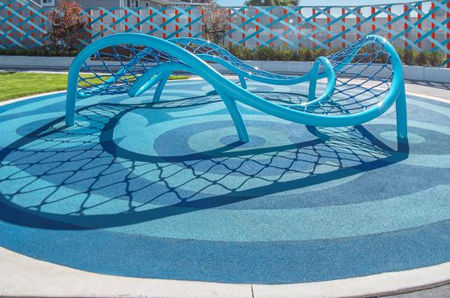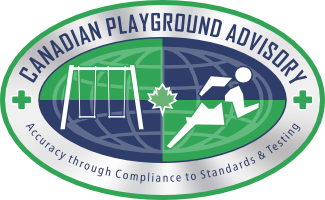Understanding Rubber Playground Surfaces
Vol. 6 Issue 1, Feb. 2014
The key to playground protective surfacing is the “protective” aspect first with accessibility to persons with all abilities and functional longevity a close second and third. Other considerations are important, but only if the surface continues to perform. This is doubly important in Ontario, Canada for Child Care operators, who have a mandated and continued requirement to meet or exceed the requirements of the CSA Z614 Standard. In the United States the mandate for continued compliance with ASTM F1292 is through the DOJ 2010 ADA Standards for Accessible Design. For both of these, compliance in the field at any time that the playground is in operation is the requirement.
Playground surfacing has obviously been around as long as there have been playgrounds. Synthetic surfaces were developed first as mats or tiles in the 1960’s and poured in place not until the late 1970’s and 80’s. Essentially these were a combination of recycled tire and post-industrial rubber and a polyurethane binder, with the technology developed for running tracks being applied. This is also when those looking for colour in the athletic surface turned to the rubber industry for a material to bring colours and meet or exceed the durability of tire rubber with the winner being EPDM. Initially the colours were all UV stable due to the limited number of colours available. With the proliferation of colours, some of the problems with fading and colourfastness began to be an issue.
The key to playground protective surfacing is the “protective” aspect first with accessibility to persons with all abilities and functional longevity a close second and third. Other considerations are important, but only if the surface continues to perform. This is doubly important in Ontario, Canada for Child Care operators, who have a mandated and continued requirement to meet or exceed the requirements of the CSA Z614 Standard. In the United States the mandate for continued compliance with ASTM F1292 is through the DOJ 2010 ADA Standards for Accessible Design. For both of these, compliance in the field at any time that the playground is in operation is the requirement.
Playground surfacing has obviously been around as long as there have been playgrounds. Synthetic surfaces were developed first as mats or tiles in the 1960’s and poured in place not until the late 1970’s and 80’s. Essentially these were a combination of recycled tire and post-industrial rubber and a polyurethane binder, with the technology developed for running tracks being applied. This is also when those looking for colour in the athletic surface turned to the rubber industry for a material to bring colours and meet or exceed the durability of tire rubber with the winner being EPDM. Initially the colours were all UV stable due to the limited number of colours available. With the proliferation of colours, some of the problems with fading and colourfastness began to be an issue.




